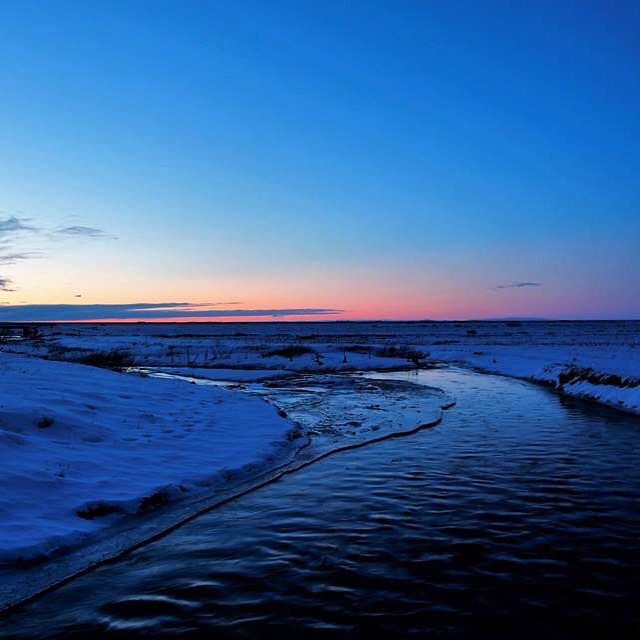Are you planning to visit Iceland by any chance? So, which month you’ve decided to be a part of this mesmerizing country? Oh! You’re still confused and can’t make a decision? Of course, choosing the best time to visit any new place needs some research because you don’t want to miss anything that’s already on your mind, right.
If you’re wondering which the best season to visit Iceland is, first of all, let me clear you that it’s not inexpensive and a place where you can go on a whim. So, I am here to help you decide the best time to visit Iceland and what you can do to make the most of your trip.

This Blog Includes
Best Time to Visit Iceland
Winter Season (December to February)
Without getting into much information, let’s get straight to the point that if you want to see the Northern Lights for many hours consider visiting the place during winters. In fact, many people believe that the best time to be in Iceland is winter season because of the heavenly white blanket of snow, cold temperatures and short days.
And when it comes to traveling around the country, one may find unpassable smaller and highlands roads. In fact, driving might look like a challenging task. In case, you’re not comfortable with such kind of conditions, there are a number of organized day tours available so that you can have a great experience exploring the country during the low season. Check some winter photos on @routeprits.
What to do in Winter Season:
Starting with the best, Chase the Northern Lights and make sure you book ASAP because these tours sell like really fast. Then you try Glacier Hiking, Snowmobiling, The Blue Lagoon, Hire a Car and drive the very beautiful Golden Circle. Also, most importantly make sure that you’re carrying right travel gears and thermals while visiting Iceland.
Average Temperature:
Average temperature in the South like in Reykjavik is 0ᵒC but can go down to -5 to 5ᵒ C. Whereas, in the north, the temperature may drop down to -10ᵒ C.
Also Read- Rome, The City Full Of Love And History
Spring Season (March-May)
Well, if you don’t feel like driving in the snow then spring may be the best time of the year to visit Iceland. Days are quite long and snow starts to melt, so you can experience sightseeing the lush green landscape of the country. Also, another reason why visiting Iceland in spring is the best because prices are lower and you won’t see a huge crowd of tourists. You might get a chance to experience rain and wind during this season, so make sure you’re carrying a rain jacket, fleece, and a good pair of waterproof shoes with you.
Always be ready with your camera because some Insta-worthy pictures are on your way. This is the time when Puffins return to the Iceland coast between Mid April and Mid August, the lambing season, and amazing waterfalls are waiting to get clicked. You can also have a great time driving to the Iceland ring roads (Not the Golden Circle) to experience the country’s most picturesque scenery and also you can plan camping there.
What to do in Spring Season:
Ensure that you do not miss the Puffin watching tour, go Hiking, soak yourself in Myvatn Nature Baths, Whale watching tour, Kayaking, Horseback riding. You need to have your t-shirts, jumpers, thermals, and light jackets so that you can put on whatever the weather demands.
Average Temperature:
0-10ᵒ C
Summer Season (June to August)
Talking about the peak season of Iceland then it definitely has to be the summer season. The reason why almost everyone wants to be the guest of Iceland in summer because of the mild temperatures, a number of beautiful attractions are open and approachable. But remember that the prices might wing its way because ‘the peak season’. Summers are undoubtedly the most famous time of the year to pay a visit to the country due to the long days, and a wide range of natural beauty are just perfect to explore the place in the best way possible.
What to do in Summer Season:
This season allows you to get into all the outdoor adventures that include Midnight Golf, visiting Black Sand Beaches, Waterfall Hopping, seeing the Geysers, Volcano Hiking, and Nature Reserve. If you’re serious about paying a visit to Iceland in summer make sure you do a pre-booking for everything, be it hotels, car rentals or the tours. Also, keep your eye mask with you because the country is popular for its block out blinds and the midnight sun can affect your body clock negatively.
Average Temperature:
It can be as low as 5ᵒ C and as warm as 25ᵒ C. On average temperature remains between 10-15ᵒ C.

5 Best Hotspots in Himachal
Traveling with Ease: Top Tips for Chronic Sufferers to Explore Stress-Free!
Neemrana ‘non-hotel’ Hotels’ – Press Release
The Best Hotels In Bali: An Unmissable List.